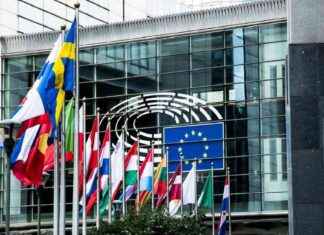While other car brands are struggling with their electrical deliveries because of the ongoing semiconductor crisis and the war in Ukraine, BYD – Build your Dreams – is turning up the heat. Expectations are particularly high for the new BYD Seal, which has now celebrated its premiere on the home market of China.
The 4.80 meter long mid-size sedan was created on the Group’s electric 3.0 platform, which can be scaled to different wheelbases and track widths. With the new Seal, the batteries are installed directly in the body for the first time. The new 3.0 platform includes the compact electric SUV Yuan Plus, which took second place in the Chinese registration statistics in June 2022 with almost 20,000 vehicles.
In China, the BYD Seal electric mid-size sedan is a direct competitor to a Tesla Model 3 or a BMW i3 eDrive based on the BMW 3 Series. The look of the aerodynamically styled Seal is reminiscent of the Ocean Aesthetics design concept, which BYD first presented to the public almost two years ago. The platform enables electric vehicles with rear-wheel or all-wheel drive and so the new BYD – just like its competitor Tesla Model 3 – is also available with these two drives. At the front, the BYD Seal offers an independent wheel suspension with double wishbones and a five-link construction on the rear axle.
The BYD Seal is powered either by a 150 kW / 204 hp rear-wheel drive, which with its 61.4 kWh battery pack is supposed to cover a range of up to 550 kilometers, or an all-wheel drive (160 kW / 218 hp front – 230 kW / 313 hp rear). The 390 kW / 530 hp top model with its 82.5 kWh battery pack should cover around 650 kilometers before the next charging stop. A long-range variant, in which the 230 kW / 313 hp rear axle is coupled to the large battery pack, offers even more range. The maximum charging speed of the Seal models is quite manageable at up to 150 kilowatts.
“As one of the first companies to develop electric vehicles in the world, BYD has 27 years of know-how and experience in the field of new energy vehicles and masters the innovative technologies related to batteries, electric motors, electronic control systems and automotive-grade chips,” says Wang Chuanfu, Chairman and President of BYD. “Backed by consumer expectation, BYD enters the Japanese NEV market. Through the joint efforts of BYD and the local NEV market, we can fulfill our pioneering role in e-mobility for a better life.”
The new 3.0 platform is said to have succeeded in connecting the battery pack and body more directly, which should not only have a positive effect on handling and driving dynamics, but also on driving comfort. In addition, the new structure should ensure an improved crash structure. Thanks to the so-called CTB technology, in which the battery modules are built directly into the body, the vehicle can achieve a torsional rigidity of 40,500 Nm/°, which corresponds to the level of luxury class vehicles. The BYD Seal also offers a balanced 50:50 axle load ratio, a low center of gravity and a low moment of inertia, which are said to improve stability.
All new BYD models will be equipped with the new blade battery. The battery pack made of iron phosphate is cobalt-free and has better performance data than the previous generation. The prices for the BYDF Seal in the home market of China start at around 220,000 Chinese Yuan (approx. 32,000 euros). The all-wheel drive top model costs just under 290,000 yuan (approx. 41,000 euros). It remains to be seen when the first models will come to Europe. In any case, Germany and Sweden should make the start here. There are said to be more than 50,000 pre-orders for the Chinese home market and the first vehicles will be available to customers this year.






